Pastor John Armstrong has made it his mission to foster unity and understanding among Christians from different traditions. To that end he organized a conversation between Evangelicals and Orthodox Christians in a forum in September 2008.
He invited two Orthodox Christians: Bradley Nassif and Fr. Patrick Reardon, and two Evangelicals: Grant Osborne and George Kalantzis. Fr. Wilbur Ellsworth, a former Baptist pastor who converted to Orthodoxy, opened up the conversation with a brief word of introduction and a prayer.
Two things should be noted about the video. One, the conversation took place in 2008 but was only recently uploaded onto the Internet. Two, the video is quite long – almost two hours. The length of the dialogue allows for better understanding between the two traditions. The length also means that it would be good if some markers were provided some readers who do not have the time to listen to the entire conversation.
To aid the busy reader who does not have the time to listen to the entire 2 hour conversation I have excerpted some of the more memorable points made in the conversation and noted the minute and second the statement was made. All the reader needs to do is place the cursor on the sliding bar at the bottom to hear that particular excerpt.
The courteous and charitable spirit in which the conversation across faith traditions was done makes it worth the listen. It will be informative for Evangelicals who wish to learn more about Orthodoxy and for Orthodox Christians who are not familiar with Evangelicalism.
At the outset John Armstrong, the moderator, noted that he is convinced that Christians don’t know each other very well (1:32). He notes that the dialog was not an effort at “profound ecumenicism” (2:55) but more of an attempt at informal or grassroots ecumenicism (3:50).
Introduction
7:37 Fr. Wilbur Ellsworth posed the question: “Can Evangelicals and Eastern Orthodox be friends? Should they be friends?” Fr. Wilbur recounts how he and Pastor John Armstrong remained friends even when they moved in different theological directions.
10:30 Fr. Wilbur denies this conversation is a form of cheap ecumenicism: “We’re not talking about ‘Let’s just love Jesus and not care about the rest.’” He offers a reflection on what he calls the “seven unities” of Ephesians 4 (10:53). He concludes with a prayer. (14:35 – 16:05)
17:40 Pastor John Armstrong introduces Fr. Patrick Reardon of All Saints Orthodox Church, Chicago. Fr. Patrick recounts: “When John asked me to be part of this panel on East and West, I asked: ‘Which side do you want me to represent?’ . . . . ‘I’m astounded that I’m considered Eastern.’” (18:20)
Fr. Patrick described his journey to Orthodoxy: “The decision to go ‘East’ was made in order to be part of the Seven Ecumenical Councils.” (20:25)
22:00 Prof. Grant Osborne, professor at Trinity Evangelical School, after being introduced notes: “We need to foster these dialogues because we have so much to teach each other.” (24:25)
He teaches New Testament at Trinity Evangelical Seminary.
24:40 Prof. Bradley Nassif, professor at North Park Seminary, in his self introduction notes: “I was one of those people who grew up religious but lost. I grew up religious but I didn’t know Christ as my Savior.” At the age of 12 he heard Billy Graham preach on television. At the age of 17 he came to “an experiential relationship with Jesus Christ (27:16), “not head knowledge, but real resurrection knowledge.” “From then on I wanted to know more about these Evangelicals.”
29:58 Pastor John Armstrong introduces Prof. George Kalantzis, Wheaton College professor and a “cradle Evangelical” who grew up in Orthodox Greece. Kalantzis clarified that his family church group, the Greek Evangelical Church (the Evangelical Free Church), came out of Greek Orthodoxy and had no contact with Protestant missionaries (32:40). (33:20 – 36:0)
The Conversation Click here to watch video
37:45 First Question: How does the Trinity shape the way you worship and the way you practice your Christian faith?
43:44 John Armstrong: “Will someone define in the simplest way for the person who heard for the first time the word ‘perichoresis’?”
46:21 Second Question: How do you understand the nature and goal of salvation?
51:25 John Armstrong noted that in the past 25 years a shift has taken place among Evangelicals in the understanding of salvation, especially with respect to N.T. Wright who has sought to understand salvation more broadly than the Western Augustinian tradition.
55:12 Third Question: “What is the place and nature of tradition?” Bradley Nassif notes that we need to make the distinction between bit “T” tradition and little “t” tradition.
1:02:40 Prof. Grant Osborne distinguished between capital “T” tradition – Scripture, and small “t” tradition. He notes that: “’tradition’ is in control in every movement.” (1:02:57)
1:05:09 Fr. Patrick Reardon denounced the small “t” tradition example mentioned by George Kalantzis where an elderly Greek lady doing an act of mortification in response to an “answered” prayer noting that what she was doing was in contradiction to Orthodox Tradition. He elaborated that a good father confessor would say to the lady something along the line of: “Are you out of your cotton picking mind?!!” (1:05:20)
1:07:45 Fourth Question: What role does mystery have in faith and worship? How does this relate to sacramentalism?
1:08:45 Prof. Grant Osborne: “Ultimately, the mystery at the heart of the universe is the God-human relationship. The Trinity is the ultimate Mystery.”
1:09:55 Grant Osborne: “Worship in my tradition is propositional. …. In my tradition we don’t understand mystery.”
1:10:50 Prof. George Kalantzis: “I rejoice seeing a whole new generation of Protestant theologians rebelling against the notion of propositional truth.”
1:10:55 Prof. George Kalantzis noted that many Orthodox Christians in Greece did not understand the meaning of the church iconography and that it fell on him a Protestant to explain to his fellow schoolmates the biblical meaning of the icons. He also described his concern about Orthodox Christians putting their faith more in icons than in God. Fr. Patrick Reardon’s response was that in the twenty years that he had been an Orthodox priest he had never seen anything like what George Kalantzis described, and concludes: “I think that’s Greece.”
1:20:45 Question from the audience: “Please respond: Romans 5:12 has been cited; why did Augustine view salvation from the standpoint of guilt and punishment, and not death? And why have Western theologians perpetuated this understanding?”
1:25:55 Question from the audience: “To the brothers from the East, what constitutes for you the worship of icon and the veneration of icon?”
1:28:35 Question from the audience: “What is the Evangelical understanding of the holy saints and their ability to intercede on our behalf? And their role in our present spiritual life?”
1:37:08 Question for George Kalantzis: “Are the abuses and disturbing practices in Orthodoxy due primarily to the worship and theology of Orthodoxy that is part of Orthodox tradition or to the failures of us who are sinners in the Orthodox Church?”
1:40:10 Closing Statements: Pastor John Armstrong gives each of the participants the opportunity to make a closing statement.
Fr. Wilber Ellsworth — There is the reality that we are to love one another as those who have been made in the image of God.
We can love one another as friends, as brothers and sisters in Christ. And so it is good to be together with Christians, [from] both East and West.
(13:11 – 13:52)
Prayer by Fr. Wilbur Ellsworth (14:41 – 16:04)
In the Name of the Father, and of the Son, and of the Holy Spirit. O Lord our God, we bow before you tonight in wonder and awe of your greatness, the magnitude of your love. The Creator who revealed himself to us through Jesus Christ as our Father. And who through the ascended and glorified Christ makes us to know what it is to be alive in God. Grant we pray this night that the glory of our salvation through the Gospel of Jesus Christ would be our joy, would be our union, and would be that which enables us to speak and to understand even when we must say, ‘Yes, there is division between us . . . we recognize we are in the great mystery of your salvation together in the Lord God Jesus Christ. In the Name of the Father, and of the Son, and of the Holy Spirit. Amen.
Resources
The above video represents the tip of the iceberg. There has already been a number of conversations between Evangelicals and Orthodox Christians. The list below presents the writings or videos of the various participants in which they attempt to interact with each other.
John Armstrong – “Evangelicals and the Orthodox Christian Tradition.”
Craig Blaisding — “A Response to Eastern Orthodoxy.” The Gospel Coalition. 2012. (A response to Fr. Wilbur Ellsworth.)
Fr. Wilbur Ellsworth – “The Christian Reformed – Who Are They?” Ancient Faith Radio. 22 October 2010. (Audio recording and transcript.)
Bradley Nassif – “Will the 21st be the Orthodox Century?” Christianity Today 4 January 2007.
Bradley Nassif and George Kalantzis – “Eastern Orthodoxy and Protestant Evangelicalism: A Dialogue.” Ancient Faith Radio. 3 March 2009.
Grant R. Osborne – “The Many and the One: The Interface Between Orthodox and Evangelical Protestant Hermeneutics.” OrthodoxyToday.org.
Jason Zengerie – “The Iconoclast” The New Republic. 27 August 2007.
Jason Zengerie – “Evangelicals Turn Toward … Orthodoxy.” Journey to Orthodoxy.
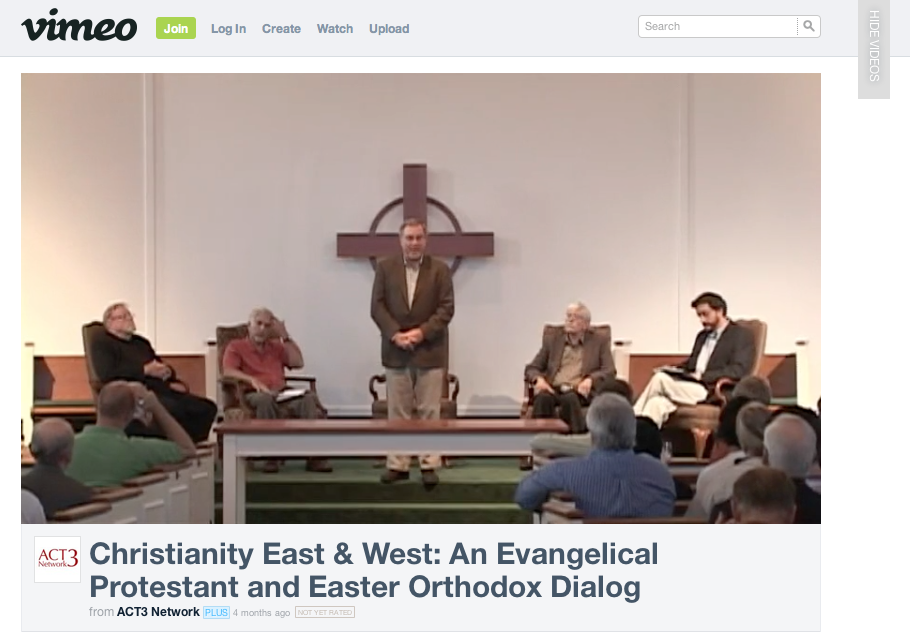
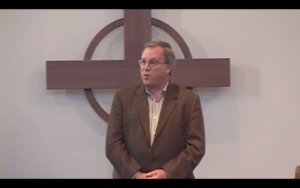
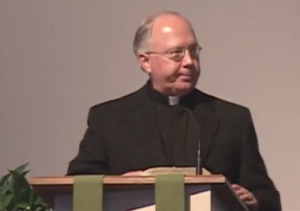
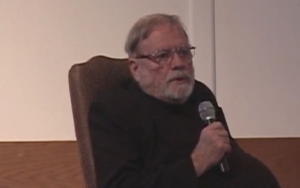
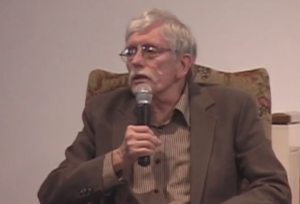
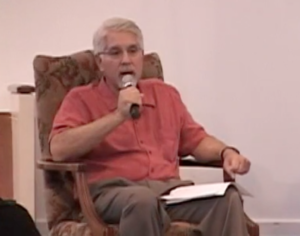
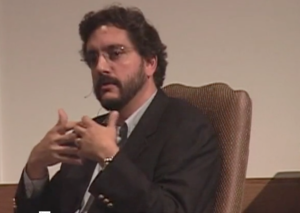
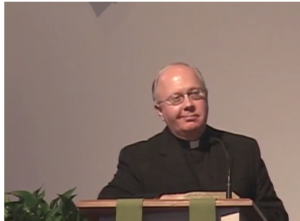
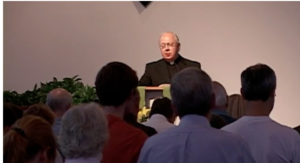
Hi Robert,
Is George Kalantzis serious in claiming that the Greek Evangelical Free Church came out of Orthodoxy without any contact with missionaries?
There were lots of Protestant missionaries from England and America running around the Ottoman Empire and the later Kingdom of Greece in the 18th, 19th and early 20th century. Jonas King is probably the most famous/notorious.
Because proselytizing was illegal in the Kingdom of Greece, many Evangelicals started schools in the hope that education would inspire Greeks to spontaneously become Protestants. Evangelicals were more successful in places like Smyrna, which was under Ottoman control, or amongst Greeks that were working in the west. There was also a vigorous publishing campaign of translations into Greek, Arabic, Turkish of various protestantising tracts.
Kalantzis claims that a bunch of atheist Greeks read the bible, found truth, were ejected from the Orthodox Church so they created their denomination without reference to missionaries? Sorry, I just can’t accept this story. It sounds like a ‘foundation myth’ so the Greek Evangelical Free Church can claim they don’t owe their existence to foreigners.
I say that if it sounds Protestant and if it looks Protestant then it is Protestant.
Regard
Stefano
PS: George Kalantzis says he went on a class excursion to an Orthodox Church and the kids couldn’t care less (he said they were in year 5 so about 10 years old) as some kind of indictment on the church. This says more about 10 year olds than the state of the church in Greece. I’ve seen plenty of bored Evangelical kids in my time. Right back at you George!!
Dear Stefanos,
You are right, there were were a number of both European and American missionaries, especially in Asia Minor. Here is where the difference between the Greek Evangelical Church and the Greek Free Evangelical Church come in. The Greek Evangelical Church is Presbyterian, Calvinist, and has historic roots in the Reformed tradition that came to Asia Minor via (primarily Reformed) missionaries. The Presbyterian Church had a presence in Greece during the last couple of decades of the 19th century, but did not truly grow in numbers until the exchange of populations between Greece and Turkey (1923), at which time large numbers of Evangelicals came from Asia Minor (primarily, but not exclusively, Smyrna). To this day, the Presbyterian Church goes by the cognomen, “Evangelical.” On the other hand, the Greek Free Evangelical Church–known as “Free,” or “Free Evangelical”–has strong Arminian (not Armenian) doctrine because of its Orthodox background.
The two movements, along with a number of Baptist, Brethren, Anabaptist, and independent movements were forced to coalesce under the common title of “Evangelical” during the Metaxas years (1936-1941) so as to have the necessary total numbers to be recognized as religious group(s) in Greece. Remember that at the time, per the constitution, in Greece there were only three recognized “religions”: Eastern Orthodoxy, Islam, and Judaism. Coalescing under the banner of “Evangelical” gave these movements the necessary total numbers to present themselves with a united front. However, to this day, “Evangelicals” (GEC) and “Free” (GEEC) continue to have the same differences and difficulties with each other that Presbyterians and Arminians (Wesleyans, Anglicans, etc) have in many countries.
As for the Greek Free Evangelical Church, as it grew–especially under the leadership of Kostas Metallinos–it recognized similarities with other groups, some from Baptist traditions, others from Brethren (from whom it also received much of its ecclesiology) and was greatly influenced theologically (especially Christologically) by the French Swiss theologians, Frédéric Godet and M. Grétillat. Slowly, it developed a more “biblicist” hermeneutic, akin to the American Evangelical movements of the mid-twentieth century, but in its DNA, its anthropology, and perhaps even eschatology, it retained the Orthodox trajectories of its past.
The fastest way I can explain the Greek Free Evangelical Church is to say that it is to the Orthodox Church what Luther (not Lutheranism) was to the Roman Catholic Church–a movement from within that demanded reform and was eventually pushed out.
A good source for the history of the Greek Free Evangelical Church is Yerasimus Zervopoulos, “Kostas Metallinos: God’s Messenger to Greece” (1983)(http://www.amazon.com/Kostas-Metallinos-Gods-Messenger-Greece/dp/B000GUADBU)
As for the mandatory “ekklesiasmos” inflicted on all of us throughout our school years, you may be right–very few, if any school-age students would pay attention at church or the daily and weekly mandatory religious classes at school (yes, religious instruction is part of the curriculum). But that’s the point. Because we force a religious identity on children (or adults), it doesn’t make it their own.
I wish many of us would have understood the beauty and brilliance of the liturgy, the story of the Gospel being enacted in space and time, the power of the iconography, and the value of the prayers. But this was never even an issue, it was never anything more than perfunctory engagement to the point of ridicule and chuckles; it was never explained, only assumed; it was simply a lost opportunity to speak the truth of the historic Church to us, as children, and invite us into a living relationship with the Faith.
I am not sure the priest(s) even knew this was a necessity. And so, students scoffed and chuckled. What a missed opportunity.
Dear Prof. Kalantzis,
Welcome to the OrthodoxBridge! Your response to Stefano is much appreciated. My apologies for the delay in posting your reply. The WordPress program quarantines all first time comment. I’ve been taking a break from blogging and have not been checking on the comments as frequently as I normally do. Thank you for understanding.
Robert
My bishop (Bp. Paul Gassios) has a spiritual journey with some similarities to Dr. Nassif’s. His testimony can be found here from before he was made bishop: http://www.stnickskenosha.org/blog/getting-to-know-fr-paul-gassios-new-diocesan-administrator
I’m grateful for both Bp. Paul’s and Dr. Nassif’s testimonies. I was in a parish for a short while with Dr. Nassif and Fr. Wilbur when I first became Orthodox. I look forward to listening to this when I have more time. Thanks for sharing it, Robert!
Karen,
You said that you were once in a parish with Brad Nassif. Was that an Antiochian Orthodox parish? He told me that his background is Antiochian Orthodox, and, should I ever choose to seek out an Orthodox church for a visit, he advised me to attend the AOC, because I might expect to find more evangelical converts in that church. He wrote that the large group of evangelical converts that entered the AOC in 1987 has had an overall positive effect. Can you speak at all to any of this?
Thanks,
Bill
Yes, Brad attends an Antiochian parish, and there are many converts in that jurisdiction, but there are also converts in others as well, and I think this will vary quite a bit depending on the area you live in. I am in a larger OCA parish (which is the smallest jurisdiction of Orthodox in the U.S.), and my parish is probably at least 50 percent or more converts and very mixed ethnically with “cradle” Orthodox of Arab, Greek, Russian, Serbian, Albanian, Polish, etc., ethnic origins.
Dr. Bradley Nassif impresses me as an honest and truly humble man. He wrote:
“More and more Orthodox, as they study the Great Tradition, are admitting that our leaders and laity don’t have a mature grasp of their own faith. They recognize that the church isn’t free from ethnocentrism or religious bigotry, that it hasn’t contextualized its faith and liturgy in the modern world, and that it hasn’t figured out how to relate to unchurched people in North America (its converts consist mostly of disillusioned believers from other Christian traditions). More and more Orthodox, as they explore the early church afresh, see that there are parts of its ancient liturgies that seem to have no biblical justification and that we cannot simply regard the Reformation and the last millennium in the West as nothing more than a sideshow.” (“Will the 21st Be the Orthodox Century?”)
I wonder what “parts of [Orthodox] liturgies that seem to have no biblical justification” does he mean?
He probably means the introduction of organs and pews. 🙂 Dr. Nassif is very “charitable” when it comes to rapprochement with Evangelicals. It’s a good thing…but I think he sacrifices nuance. I’m quite sure that he would also uphold that Othodoxy doesn’t need to rely “solely” on what is “biblical”…it has the whole of Tradition bearing weight on its praxis…which is FAR more reliable that “biblical” interpretation a la the “sola” type which reinterprets everything in the bible through its own “context.”
When my child was baptized two months ago…he was baptized the same way every Orthodox Christian has been baptized since the 4th century.
You’re lucky to get a baptismal rite in the Protestant churches that last 5 years. And now Fireworks displays and Big screens become the draw. Protestant Churches are now baptizing with super-soakers and water balloon tosses…and want to lecture us about liturgical “biblical conformity.”
; P
It makes me chuckle.
Aaron, Brad is indeed a gentle and charitable person. I’m sure his emphasis on Scripture is to meet Evangelicals where they are by using a source we both regard as authoritative. He is solidly Orthodox with respect to understanding Scripture within Tradition. When he preaches to fellow Orthodox, he is as likely to invoke the Fathers of the Church as he is the Scriptures making his points (you can listen to him in archived podcasts at Ancient Faith Radio). You and I already know how very central the Scriptures are to all aspects of Orthodox faith and practice.
Me too Karen. My hope is that Bill has it right and he means pews,
organs and other such importations from protestantism. I too have
thought his use of “biblical” as with Rod Drehre’s ill advised. It is a
slip-concession to sola scriptura that might easily lead to a dangerous
proof-texting. The word the Apostles received from the Holy Spirit
and taught to their disciple/Bishops, and preserved then delivered…
traditioned down for centuries by our Bishops, is every bit as autho-
ritative as Holy Scripture. Otherwise we would in time be reduced
down to protestant fundamentalists handing out gideon bibles for
the unlearned masses to discover who knows what new doctrines.
Lord have mercy.
David,
Actually it was Aaron, in reply to me, who mentioned organ and pews, but he must have been confused by my edit of Nassif’s quote indicated by brackets. That’s my bad. Sorry.
If you look at the larger quote just above, you will see that Nassif used the adjective “ancient” in reference to the Orthodox liturgy, thus:
“More and more Orthodox, as they explore the early church afresh, see that there are parts of its ancient liturgies that seem to have no biblical justification. . .”
So, I wonder to what part of the ancient Orthodox liturgy does Dr. Nassif refer that “seem to have no biblical justification.”
oophs bill you are right…it was Aaron. also right that pews and organs weren’t likely part of Orthodox “ancient” Liturgies either. sorry ’bout that.
Bill,
Sorry for this late reply. I had difficulty logging on. But your quote from Prof. Bradley Nassif is a good one and one that many Orthodox Christians should give thought to. Among the problems that many Protestants have with respect to the Orthodox Liturgy is the veneration of Mary the Theotokos and the veneration of icons. A sincere Protestant like the Rev. John Shearouse who recently commented here complained that there’s no biblical warrant for these practices. (I’m working on a response to his concerns.) I had similar problems with Orthodoxy at first but as I reread the Bible I began to see how both are compatible with Scripture. To come to these conclusions I first needed to remove the Protestant glasses with which I was reading the Bible. And apparently some Orthodox dismiss Protestantism too quickly according to Prof. Nassif. I try not to do this on this blog. I set up the OrthodoxBridge so as to give inquiring Protestants good reasons for considering Orthodoxy.
Robert
Well said, Robert. I asked Dr. Nassif to which part of the ancient liturgy was he referring. Before sharing his answer on this thread, I will ask him for permission to do so.
Bill
Bill,
I hope we will be able to see that response from Dr. Nassif.
I am convinced that the quote you provided from Nassif, as Robert indicates, has important insights for Orthodox to consider. However, I’m not sure those things are the same things you are attracted to – i.e. “biblicalism.” There is however MUCH to consider in regards to Orthodoxy’s current ethnic nature. This is a huge subject…which is not an “Orthodox issue” alone. Our American values highlight this as a problem. A recent school project of mine was to look at Churches in my community and what separated them. More than doctrine…what separates them is ethnicity. That might seem natural to some…but in a city like San Francisco…it becomes quite surprising to discover how enduring cultural and ethnic isolation is for all expressions of faith….even in the Protestant world…a fact I never recognized before.
This is what I take away from Dr. Nassif’s statement here as relevant for Orthodoxy’s future in the U.S. and around the world.
Robert,
I agree. It would immediately ring alarm bells for a Protestant when they hear or read of the Theotokos as the “gate of salvation.”
And yet…as Dr. Nassif points out…not particularly because there is inherent issues with this language or the liturgy itself, but because a person cannot /will not take the time to understand that she is the not the “gate” as in the “one mediator between God and man” – …but the “gate” through which the incarnation (salvation) of the God-man sprung. The gate of salvation is a reference to the womb.
I’ve been reading a lot of Margaret Barker recently and her explorations of Temple theology. I was struck by a beautiful early Christian Tradition of Mary’s dedication at the age of 3 to the Temple as a Temple seamstress that is so poetic and sheds light on such Akathist hymns. I quote from her work;
“The veil of the temple was woven from blue, purple, crimson and white thread and embroidered with cherubim (2 Chron 3:14) Josephus, who was himself a priest (Life 1), says that the tabernacle was a microcosm of the creation…The veil was the boundary between earth and heaven. Josephus and Philo agree that the four colours from which it was woven represented the four elements from which the world was created…In other words, the veil represented matter. In the Epistle to the Hebrews, which explores the theme of Jesus as the high preist, there is the otherwise enigmatic line: his flesh was the veil of the temple (Heb 10:20) In other words, the veil was matter which made visibile whatever passed through it from the world beyond the veil.
The high priest was the only person allowed to enter the holy of holies. As he went beyond the veil he entered heaven. When he emerged he was coming down from heaven. His role was to link heaven and earth.
Outside the holy of holies he wore a coloured vestment woven IN THE SAME WAY AS THE TEMPLE VEIL. Both fabrics represented matter. The high preiest in the temple and outside in its courts represented the presence of the LORD clothed in matter, Incarnation. Just before Jesus was born, Herod ws refurbishing the temple, and a new veil was made. Mary ws one of the temple weavers, and the story is told that shw was making the new veil while she was pregnant. The symbolism was not lost on the early Christians. ”
Here we see Mary weaving the new veil between the heavens and the earth in the temple…AS she SIMULTAENOUSLY weaves in her womb the veil between God and man through her humanity. That veil is torn at the crucifixion and the veil between heaven and earth is removed – A REVELATION is achieved. Heaven and earth are no longer invisible to one another….they can be…they have been…reconciled and unified.
“Mary was given to the temple when she was three years old, like the infant Samuel (1 Sam 2:24) The priest received her and sat her on the third step of the alter, and she danced at his feet in the temple…and grew up in the temple until, at the age of twelve and the onset of puberty, she had to leave…(purity laws in regard to menstration.) A husband was found for her, Joseph, who was a widower with sons. When a new veil was needed for the temple, seven young women were chose to spin the wool and to weave. Mary was one of them, and while she was spinning, the angel told her that she would give birth to the Son of God Most High. Mary spinning the red wool as the angel speaks to her became the ikon of the Annunciation. While she was weaving the new veil, the symbol of incarnation, she was pregnant with her child, and icons, she is shown holding her spindle…It appears in the Akathist Hymn…the roots of all this imagery lie the first temple…the house of Wisdom.” “The spindle has been a familiar symbol for centuries…
In Isaiah…the current Hebrew text has (MT) has: “Ask a sign of the Lord they God…behold a maiden* shall concienve, but the Qumran Hebrew (which agrees with LXX) has “Ask a sign of the Mother of the Lord thy God…behold the Virgin shall conceive.” Since the later, altered, Hebrew constituted the basis for Jerome’s Vulgate, these fundamentals have been lost to the Western churches. ”
Dr. Barker goes on to explain in another work; The veil of the temple separated the holy of holies – which was the invisible world, eternity, the state of God and the angels- from the visible material creation in time. Both were part of the one creation, and the shape of the temple symbolized the LORD enthroned in the midst. The veil distinguished eternity from time, and the unity from the distinct beings of the material creation. In the holy of holies there was neither time as we know it nor matter, and so there could be, by definition, nothing to divide or separate. It was the state of unity, divine unity.”
None of this can be discerned through sola scriptura….it belong only in the Traditions and life of the Orthodox faith. While it is not salvific to have such gnosis…repudiation of such truths in praxis or doctrine certainly limits the depth to which one can appreciate, accept and live the a life that TRULY appreciates and recognizes these realities…and can understand biblical language for what it actually means, rather than substituting meaning by “contextual exegesis…” i.e. “what does this mean in my context” or “what does the historical-critical method of scholasticism interpret this passage as saying.”
Bill, not confused. It was a tongue in cheek statement that reflects life in Orthodoxy. Perhaps only Orthodox appreciate the humor.
Anyway…This whole objection reminds me of the scene in A Few Good Men…
https://www.youtube.com/watch?v=fgIBG8q1Gjc
Aaron,
That. Clip. Is. Brilliant! Love it.
Here is the reply from Bradley Nassif:
“One other example ‘might’ be the Akathist service to the Virgin Mary. The wording of that liturgy makes it very difficult to avoid thinking of Mary as our divine Savior. I know this has been answered in various ways, such as ‘poetic license’ etc., but I simply do not see even that as indicating something other than what it seems. In saying that, however, I would not oppose the liturgy simply because the problem may be with my own understanding rather than the liturgy itself. I have yet to find a theologically and historically solid interpretation of the Akathist service that will alleviate my hesitations. Be that as it may, I submit to the church’s use of that service, but I myself can not (in good conscience) partake of it.”
In his second email, he added his hope for the discussion on this site that “both sides would act like Christians.” Amen, eh?
Bill
His response makes sense to me. I struggled with the Akathist Hymns when I came into Orthodoxy. I can see his point here. I’ve only actually heard the Akathist to the Theotokos used once in a special Vespers service, and I took the hymn book home with me to study and see if I could come to terms with. It’s not a part of regular Divine Liturgy, at least for my jurisdiction.
I’ve resolved my initial concerns with this Akathist of the Theotokos for myself. Dr. Nassif has been unable to. But that is the beauty. No one can force him one way or the other, and no one does.
When I came into Orthodoxy I had concerns and questions about icons, Mary and such things. In those concerns, never was I forced into any “regulative principle” of worship. I came and participated, and where I had reservations…I didn’t participate. I don’t think I kissed an icon for 6 months. My wife used to be Roman Catholic and she still doesn’t quite “get” the practice of icon veneration (surprisingly) and so…she doesn’t do it. No one ever hastles, cajoles or forces anything upon her. She must come to these in her own way.
I was allowed the time, the space and the work of the Spirit to work these things out for myself. But no one in Orthodoxy will ever force someone else to sing a hymn, say a prayer or venerate an icon if they have scruples against it. At least not in my experience. Such actions would be completely out of the spirit of Orthodoxy as I have had the pleasure to live it within my Church.
Such freedom was not my experience even as a Protestant, where I was “not free” to practice a, b or c. I was involved in Protestant Churches that were fairly open in the way Orthodoxy was…but would certainly draw a line and “force” others to participate as they “regulated.” Some were so strict as to be considered oppressively authoritarian. I literally had to “run” from one that was so controlling it was quasi-cultish.
When I asked my priest for a “rule” for fasting…his response was never dogmatic. In fact, it was completely relational. “It’s different for everyone and can hold as many dangers of pride or despondency as it can hold benefits. Take it slowly, never do it dogmatically, and never force it on anyone…or on yourself. It is meant to be done in Love. If you can learn to do it in Love and selflessness, your emptiness (hunger) will be filled by God.”
Anyway…I’m glad you shared his answer Bill. It should give both sides of this discussion food for thought.
I guess the question I’d have is this; Most of the Orthodox on this site have experienced and understand what Dr. Nassif is speaking of and can relate to working through those issues (esp. as we have moved from Protestantism to Orthodoxy) Have you ever been to a Divine Liturgy? Do you have any practical understanding of what the Akathist Hymn is and when / where it is used? If not, I’d invite you to discover what it is Dr. Nassif is actually describing and talking about – and the freedom he has to work those issues out himself as an Orthodox Christian…a freedom he would be quite deprived of in much of Protestantism.
Aaron,
This past Saturday evening I visited a nearby Russian parish. The visiting priest was delayed so they did an Akathist service and then when the priest arrived they did the Vespers service. During the Akathist service I was reflecting on the recent conversations we’ve been having on this blog. I can see how a visiting Protestant would be thrown for a loop with the extravagant (over the top?) language used with reference to the Theotokos. Some of the phrases are straight from Scripture, some are allegorical interpretations of Scripture, and some take poetic license.
While I disagree with Prof. Bradley Nassif’s hesitance to participate in the Akathist, I also respect his views. I view Orthodox Tradition as a series of concentric circles. In the inner core are the essentials like the Sunday Liturgy, the Eucharist, the Creed, the Gospels etc., and then there are outer circles that comprise item of lesser importance. I would not put the Akathist services on par with the Sunday Liturgy but I would affirm that they are very much a part of Orthodoxy and cannot be omitted from parish life.
I see the extravagant language used in the Akathist as something like romantic chivalry, like the kind of ballads medieval knights would sing to their beloved before riding off to battle. Singing the hymns to the Mother of God brings out a sense of chivalry I did not experience as a Protestant Evangelical. It strengthens my masculinity in ways I did not experience as a Protestant.
Robert
Not sure who helped me with this but Scripture uses hyperbolic language “hate” father and mother in “contrast/comparison” as do the Psalms — not intended to be taken literally or with identical “content” into ever use of a word. Paul says he might “save” some, as does the believing wife “saves” her husband/children…or even herself in childbirth. Likewise, not every word of Liturgical language is to be take in the most extreme way possible. We allow such language to tie us in knots unnecessarily due to out protestant baggage, lack of nuance and understanding. When the Fathers, Church Councils and present Bishops assure us we do not give “Worship” or “Deity” to the Theotokos in such language — as we openly do Father, Son, and Holy Spirit — they should be trusted and obeyed rather than questioned and challenged. Yet, it is refreshing that our current Fathers are patient and gentle, and do not force us to obey …even when they are right and we are wrong. 😉
I’ve struggled with certain parts of the Akathist service myself. Particularly when Mary is referred to as the “propitiation of all the world”. I have rationalized it that it is meant in a secondary sense. But it’s still a little hard for me to swallow.
Clayton,
I looked up the word “propitiate” and found this: “to please and make calm a god or person who is annoyed with you.” (Cambridge Dictionary) The Wikipedia entry for “propitiation” gives a slightly broader definition: “the act of appeasing or making well-disposed a deity, thus incurring divine favor or avoiding divine retribution.” Dictionary.com notes that “propitiate” comes from two Latin words: (1) “pro” – to, towards, and (2) “petere” – to make for, to go to, seek, strive after, to ask, beg. It defines “propitiate” as literally “a falling or rushing toward” and also “eager” and with respect to the gods “well disposed.” As I reflected on the range of meanings embedded in the word I think I found an approach that addresses the concerns you and others have raised.
For many of us propitiation is a theological term that refers to a sacrifice and an offering of blood in order to placate an offended deity. But the act of propitiation (making someone well disposed to you) happens all the time in society. If I’m late for an appointment, I’ll offer an apology to the person I kept waiting. A man will give flowers to propitiate his offended wife or girlfriend. In times of war the act of surrender will bring an end to hostilities. A soldier raises his hands in the air and the other side is expected to stop shooting at him. The town mayor raises the white flag and turns over the town to the attacking army propitiating the king.
If the word “propitiation” can carry this range of meaning then Mary’s humble ‘Yes’ to the Archangel Gabriel in humble submission to the divine will can be seen as having a propitiating effect, that is, it makes God well pleased. As the New Eve the Virgin Mary made possible the coming of the Second Adam, Jesus Christ, to reconcile the world to God through his death on the Cross. As the Second Eve Mary in offering up her body to God did so on behalf of the human race. This I suspect is the context for the Akathist service reference to Mary as the “propitiation of all the world.”
So likewise when we surrender to Jesus Christ and accept him as Lord and God through baptism we propitiate him, that is, we enter into his favor. The greatest act of propitiation was not by us but by Jesus Christ who gave up his life on the Cross (1 John 2:1).
Robert
Thank you Robert, that’s a helpful explanation.
Opps!
Dr. Nassif asked me to be sure to include a smiley face after his gentle admonition that we all act like Christians. So . . . here you go 🙂
Our emails cross over one another.
Wow! This conversation illuminating the Church’s language about the Theotokos is wonderful! I have experienced much the same struggle with this issue as all Evangelicals/Protestants coming into the Church. Through the kind of teaching Aaron discusses here, it has dawned on me gradually since I’ve become Orthodox how the Church (and the Scriptures) use the symbols and images of its language on different levels and in different senses (of both Christ and His Church) and how everything done in the Church and which the Church does is like a ripple emanating out as a direct effect from the primary and central Reality/Event of our existence, which is Christ in His Incarnation–the uniting of Heaven and earth in His own Person.
Aaron, thank you *so much* for those illuminating excerpts from Margaret Barker’s scholarship on the extra-biblical history about the Theotokos. Actually, it gives me chills in how it illumines how the Scriptures record just the tip of the iceberg of what God has done and is doing through His people, the Church (OT & NT), to reveal Himself in ever greater fullness to all. (The Apostle John knows whereof he speaks in John 21:25!)
Good contribution from David there, too, about the use of hyperbole in Scripture.
Thanks so much to everyone!
Yes, I love the room that is made within the Orthodox Church for the work of the Holy Spirit in the life of each believer to develop as they are able at each stage without force (and also in the spirit of Romans 14). Authoritarian strictness, I’m sure, can and does happen in Orthodox monasteries and parishes, but this is profoundly contrary to the spirit of her teaching as seen especially in her most holy Elders and Fathers throughout her history. The writings of contemporary Elder, St. Porphyrios of Athens, Greece (and Mt. Athos), who reposed in 1991, particularly illumine this aspect of a genuine Orthodox spirituality of a profound respect for the necessity of the full freedom of the spiritual child. Only a completely free and voluntary participation in the various disciplines of the Church (including her liturgies) is beneficial. That which is compelled is damaging and is an obstacle to our developing true love for God and others St. Porphyrios warns (and many of us have experienced this and know whereof he speaks!). I’m reminded of the Scripture, “God loves a cheerful giver!”
My earlier reply to myself was also in response to parts of Aaron’s comment May 20 at 9:06 pm.
Robert,
You may be interested in the 4 talks Fr John Behr gave last winter, first one here:
https://www.youtube.com/watch?v=jaZmvyzOj04
In the fourth he talks about how the way Orthodox talk about Mary grew out of extended meditation on Christ himself. All of them are really great, and the topics of the talks are each an extended focus of some things he discusses in his book “Becoming Human.”
Dana
Thank you Dana for the suggestion!
Robert